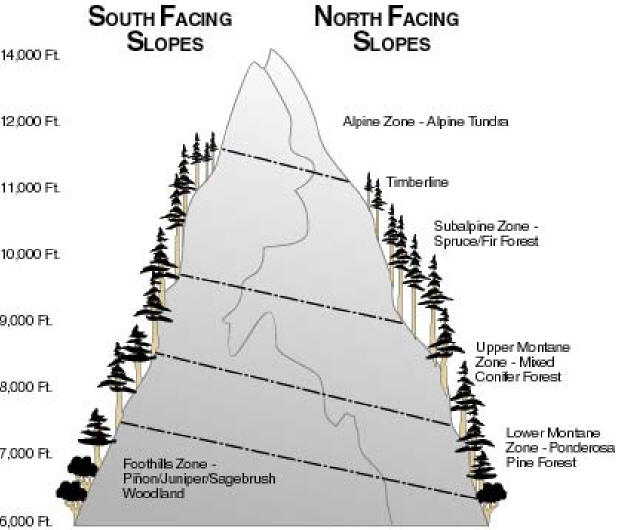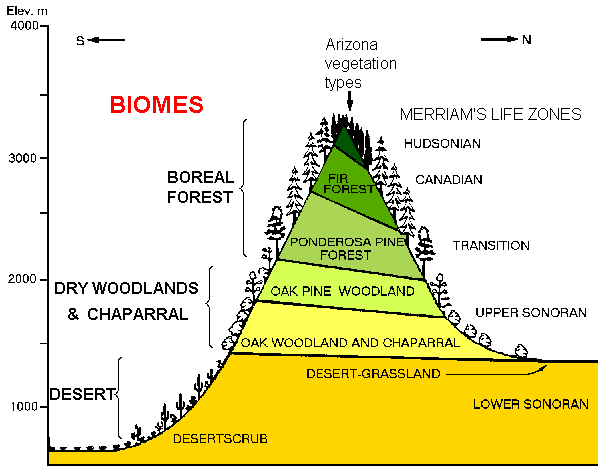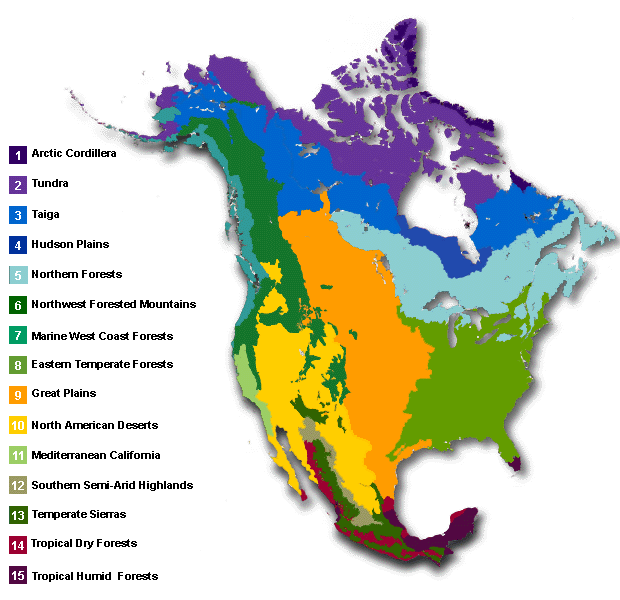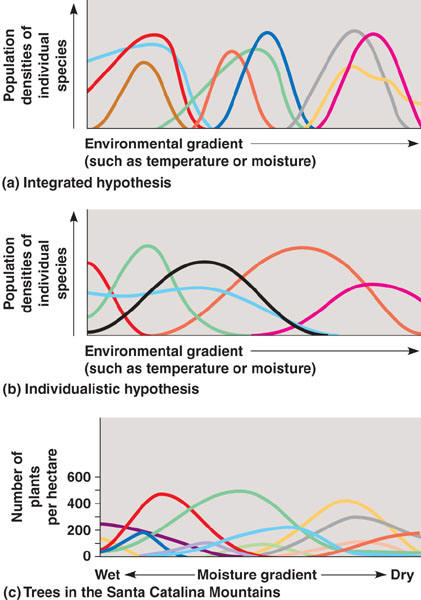
Topic 12:
Life Zones
Announcements:
Begin our tour of SW Life Zones next week!
Tree Quiz in lab next Week - study the trees on the list from lab 1, but remember that ONLY lower elevation species (ones we actually saw in lab) will be on the quiz
next Beast discussion next week in Lab
1st Animal Presentation next week in Lab
Field Journal check coming soon! --> Lab week 8 (10/20)
Learning Goals for Day:
o Predictable zones or bands of vegetation @ diff. elevations
o what limiting factors determine upper vs. lower limits of zones? (remember – they’re not the same!)
o How do climatic variables change with elevation? be specific!
o How do the life zones compare on different slope aspects – begin & end at about the same elevation, or at slightly different elevations?
o What do we mean by “upper” & “lower” treeline?
o what is the elevation of upper treeline in SW Colorado?
o what happens to elev. of life zones as you travel N or S?
o How distinct are the life zones? Do they change abruptly, or do individual species appear & disappear at different elevations?
§ use information from your lab exercise to address this question
Ø
Nature of Life Zones:
Fill in names of major life zones of SW on diagram
use your field notes, lab handout (& books)
Nature of Life Zones:

Why are the zones tilted?
What factors determine upper & lower limits?
What must happen to life zone elevations as you travel to the north or the south?

Life Zones of the SW Mountains and lower elevations (from Arizona)
North American Life Zones or "BIOMES":

The "Nation States of Trees" - Why are different biomes/life zones dominated by different kinds of trees (or, in some cases, the lack of trees...)?
Nature of Plant Communities and Life Zone Borders:
...generate hypotheses, & means of testing them!

Which of the two views about the nature of plant communities and life zone boundaries is represented by Figures (a) & (b)?
Figure (c) shows actual data collected by the famous ecologist Robert Whittaker in the Santa Catalina Mountains of Arizona - which model, if any, is it most similar to?
Can you see any evidence of distinguishable life zones in this figure?
+++